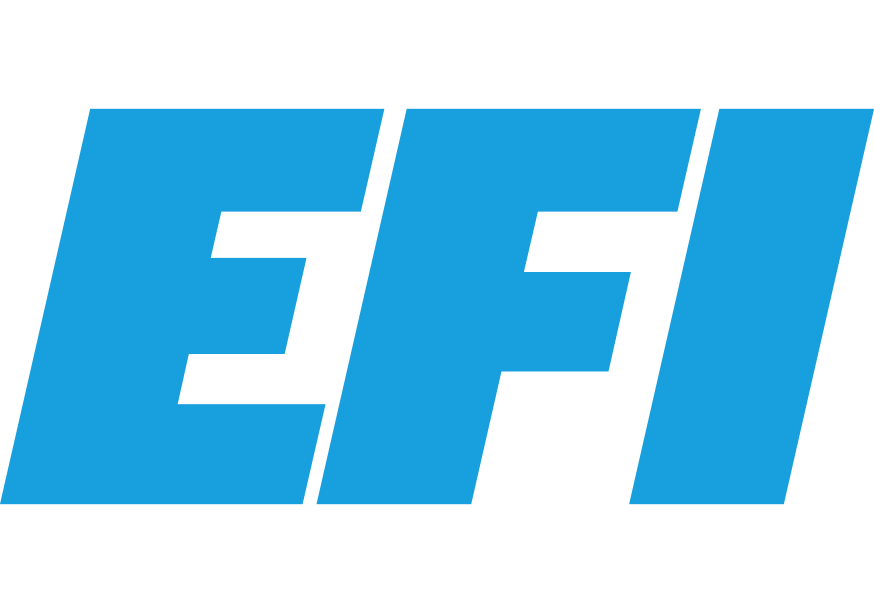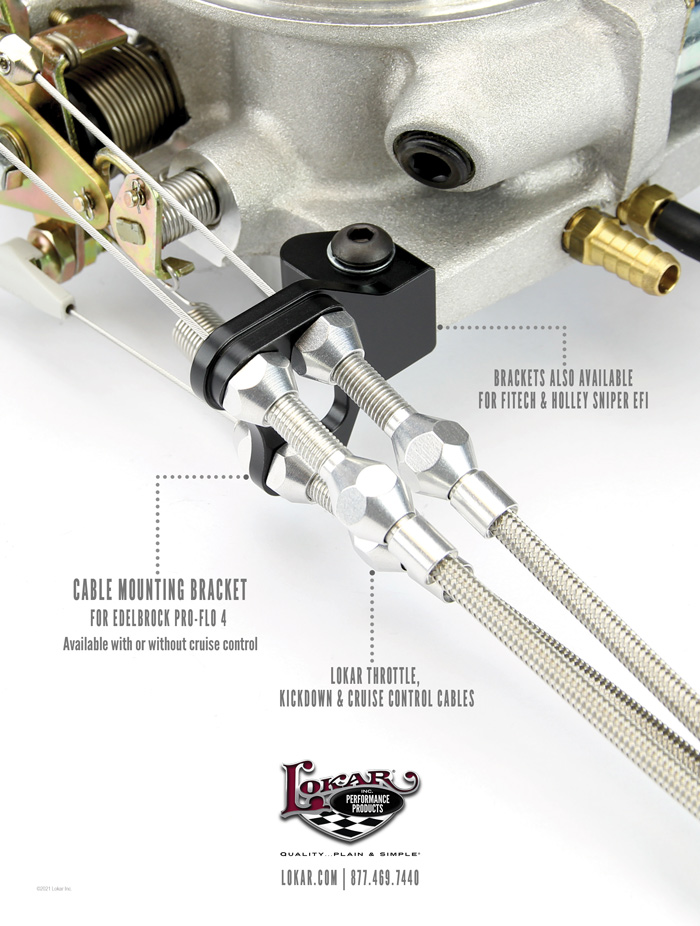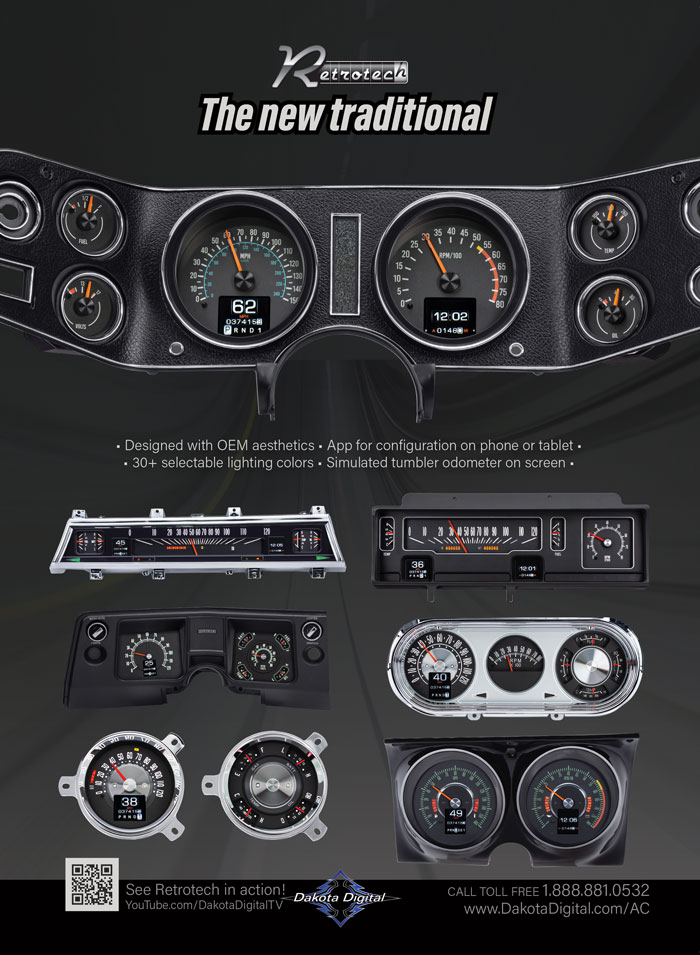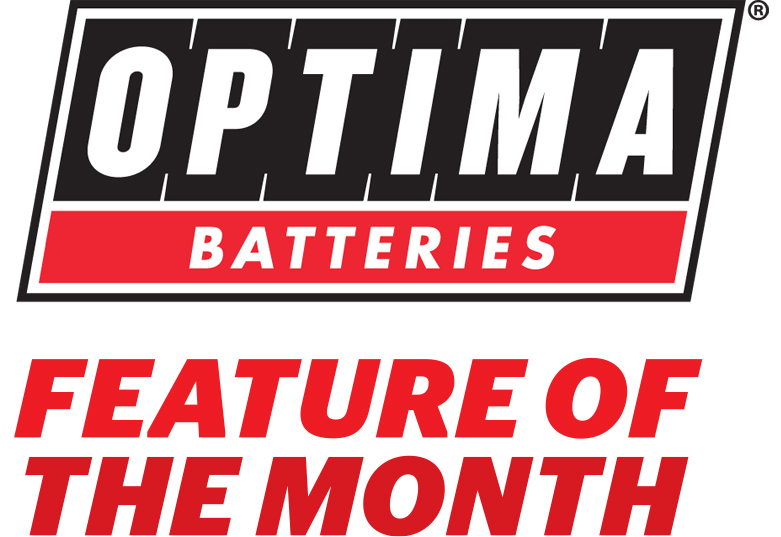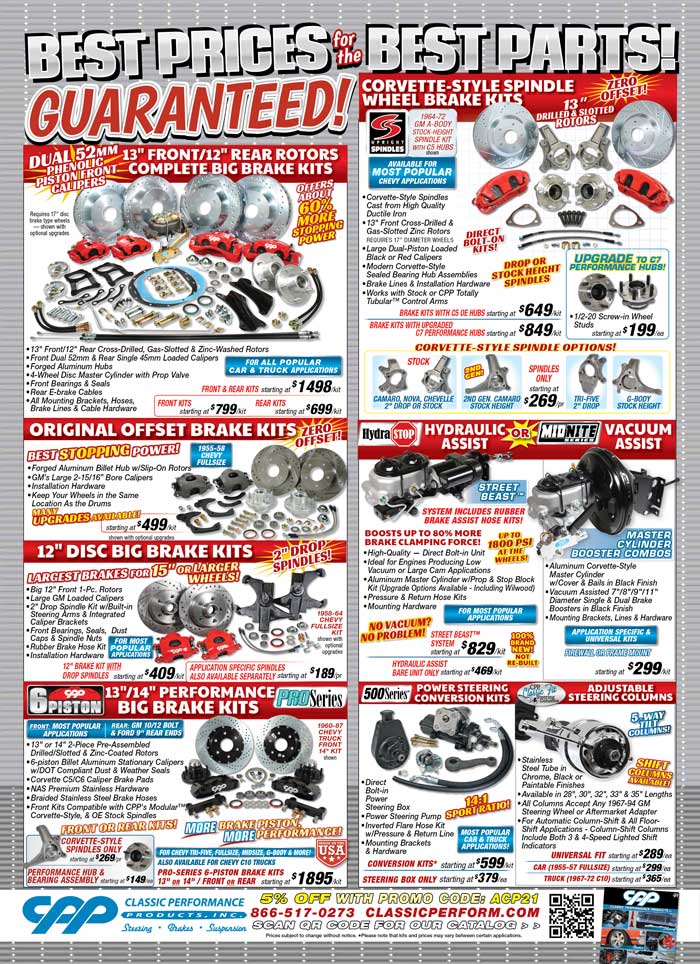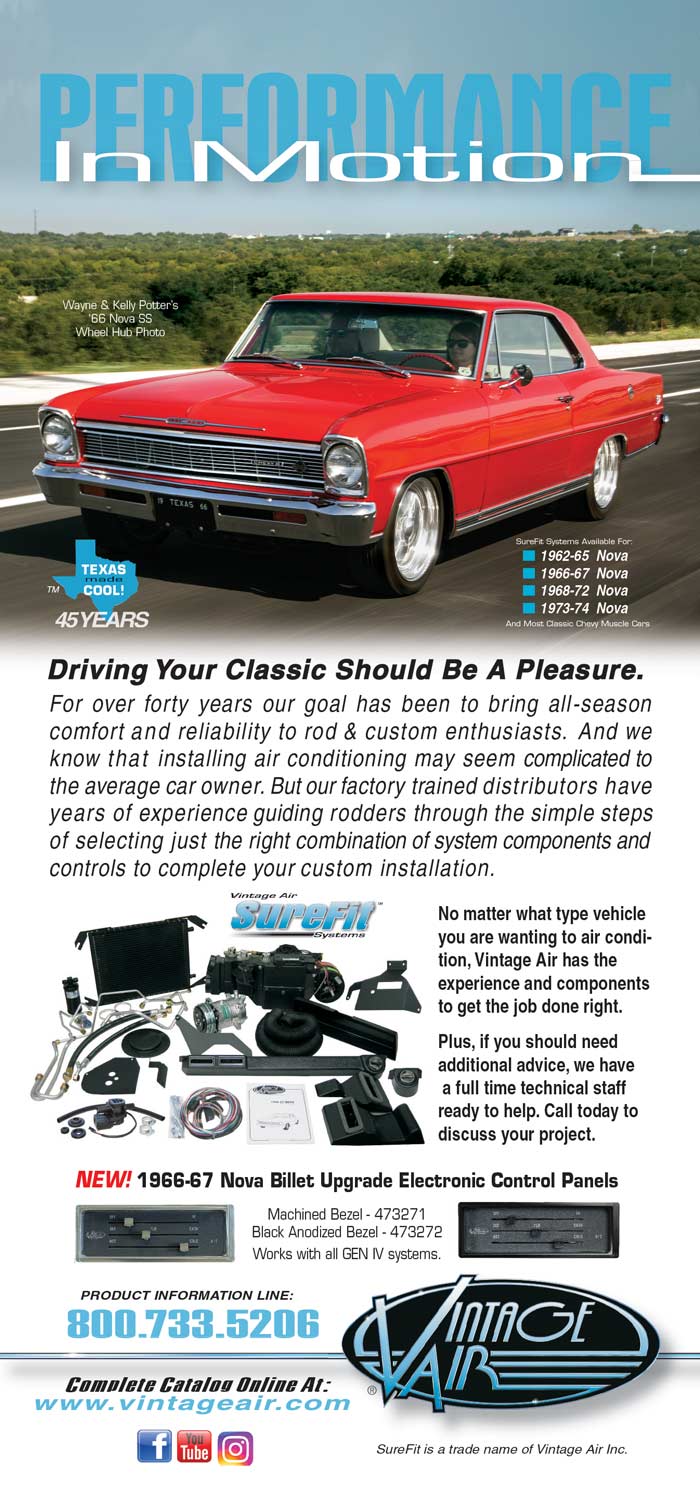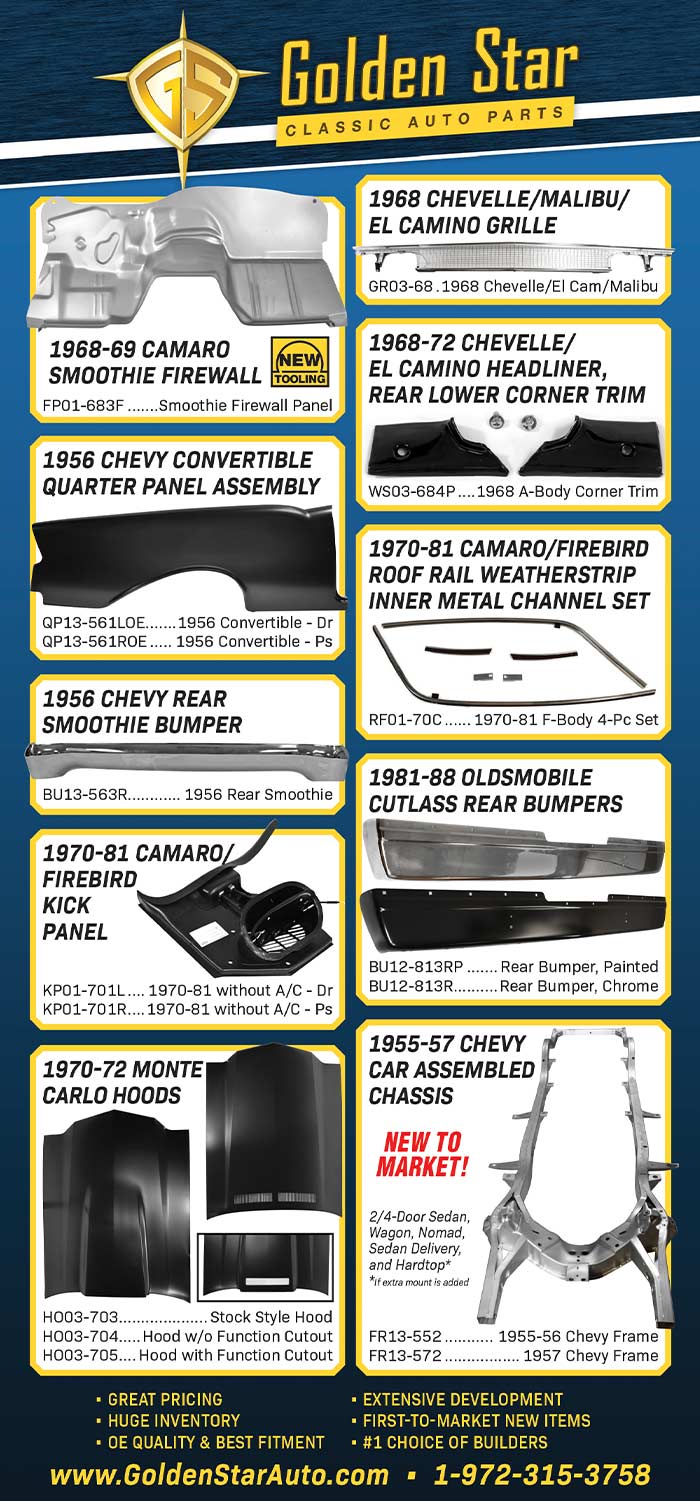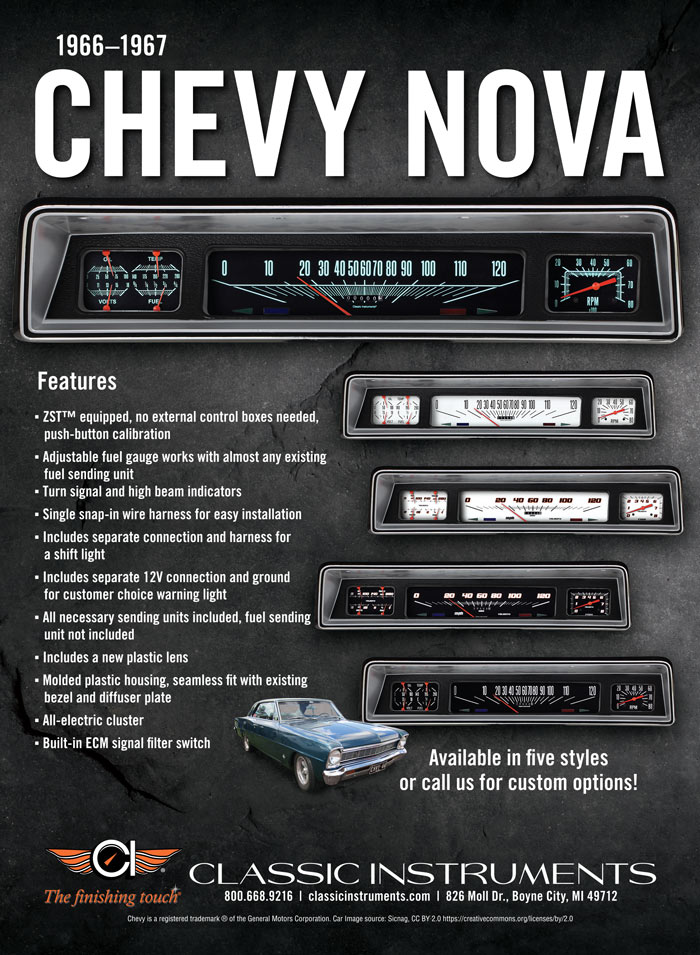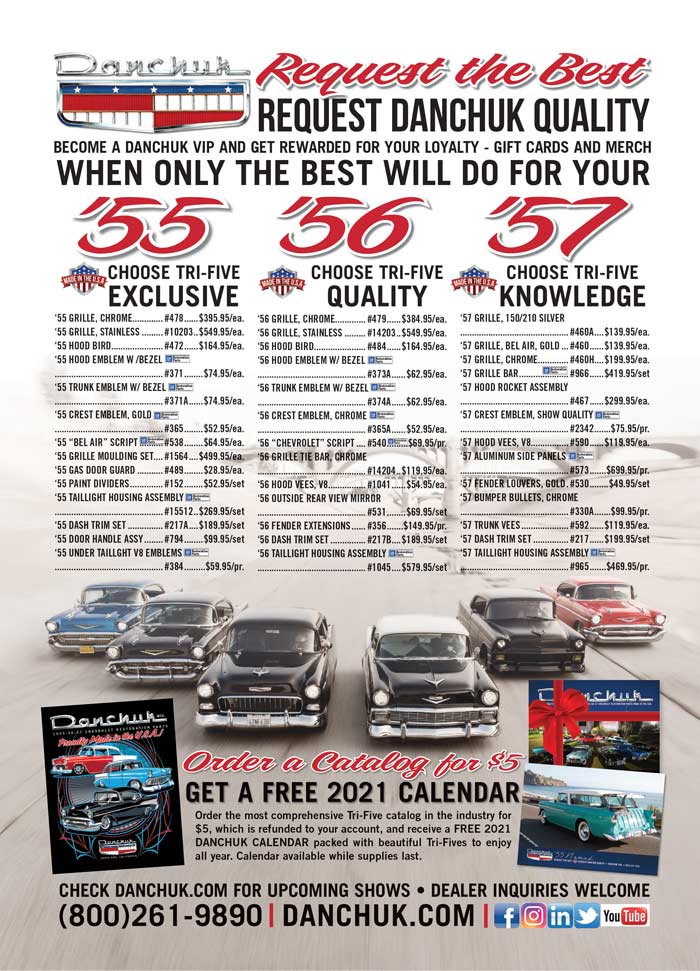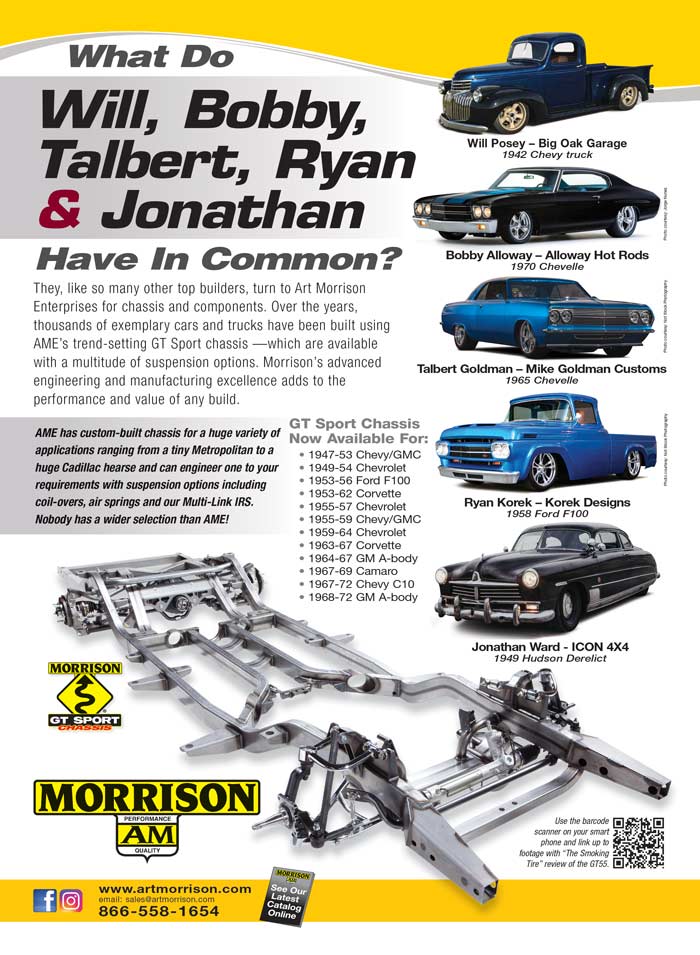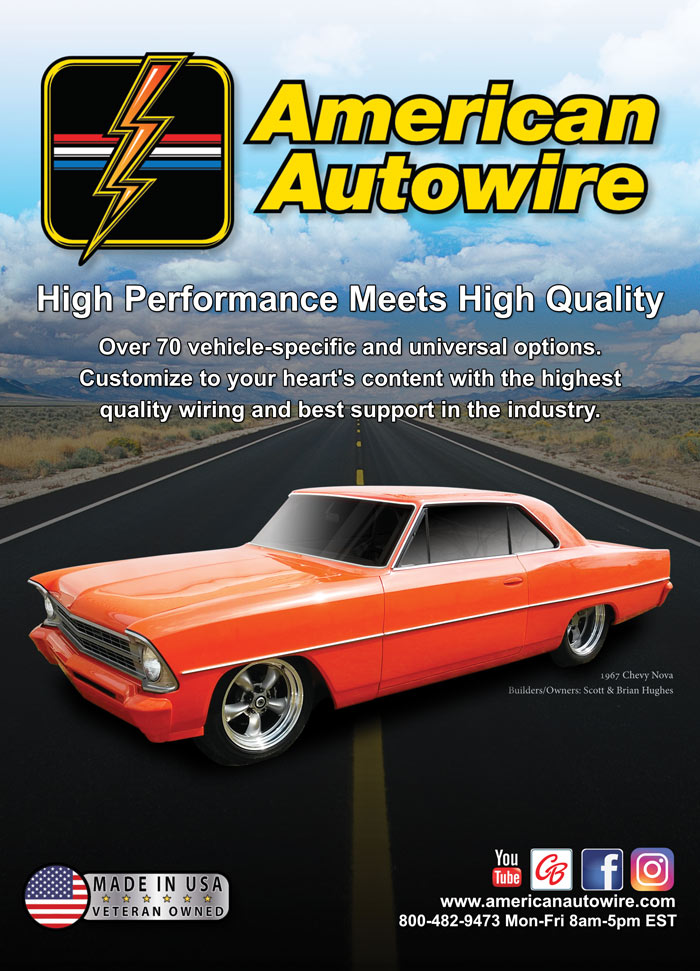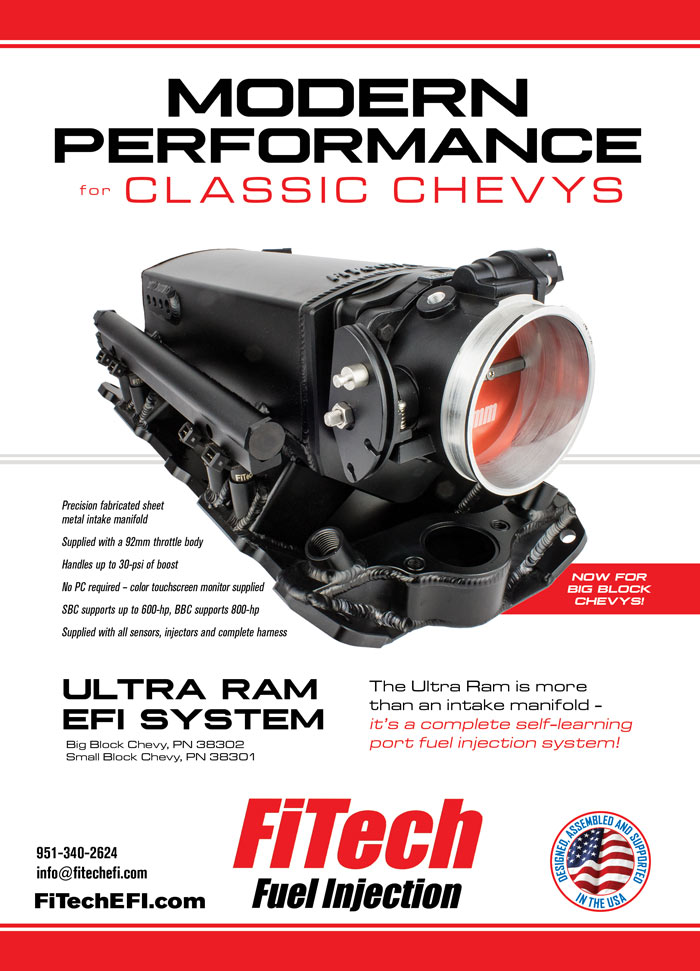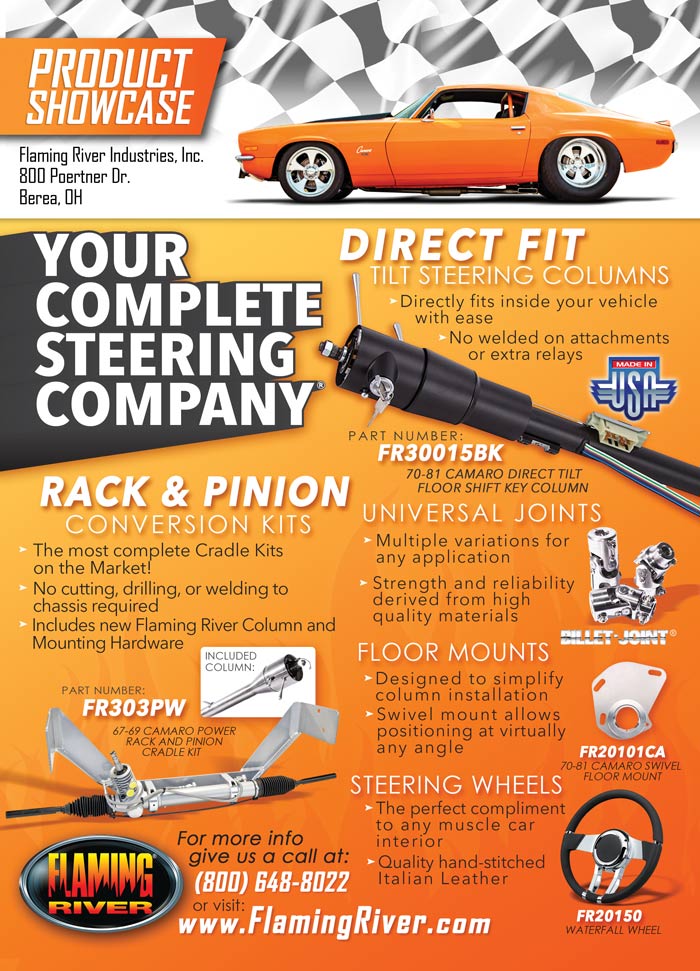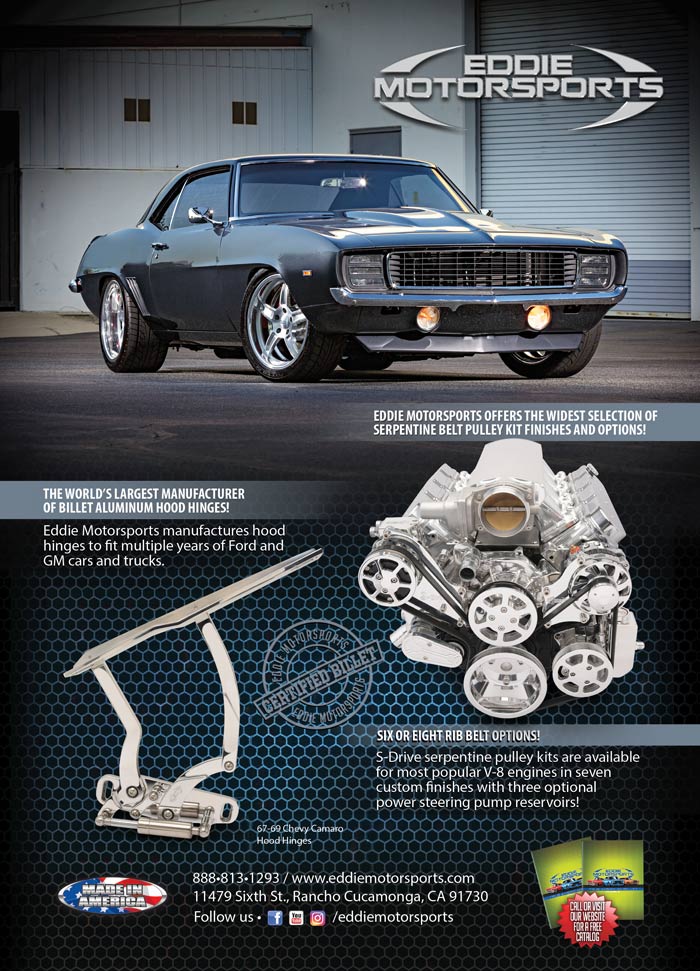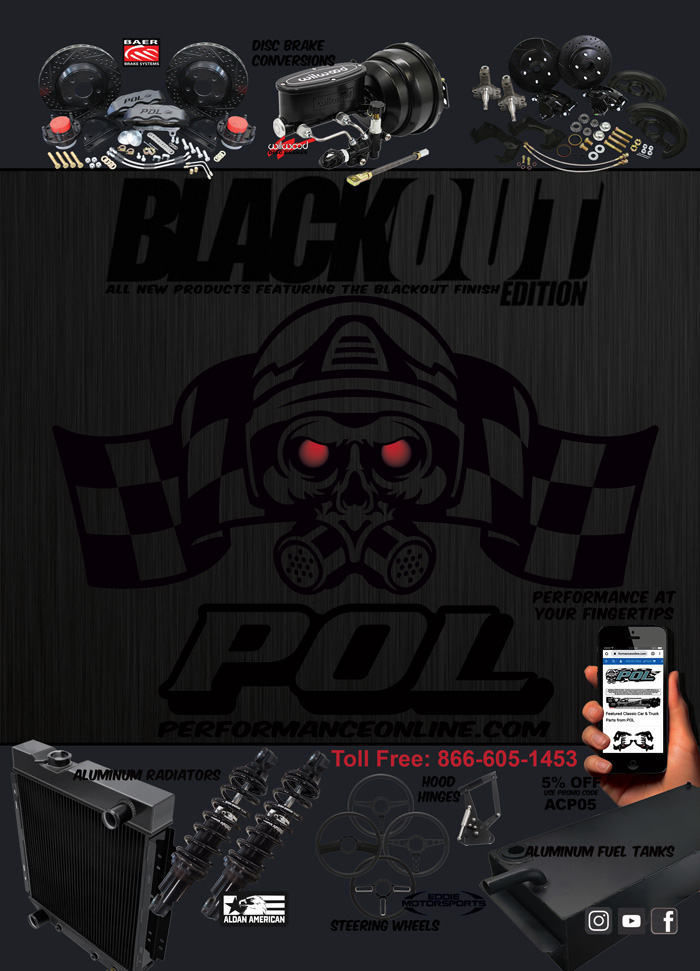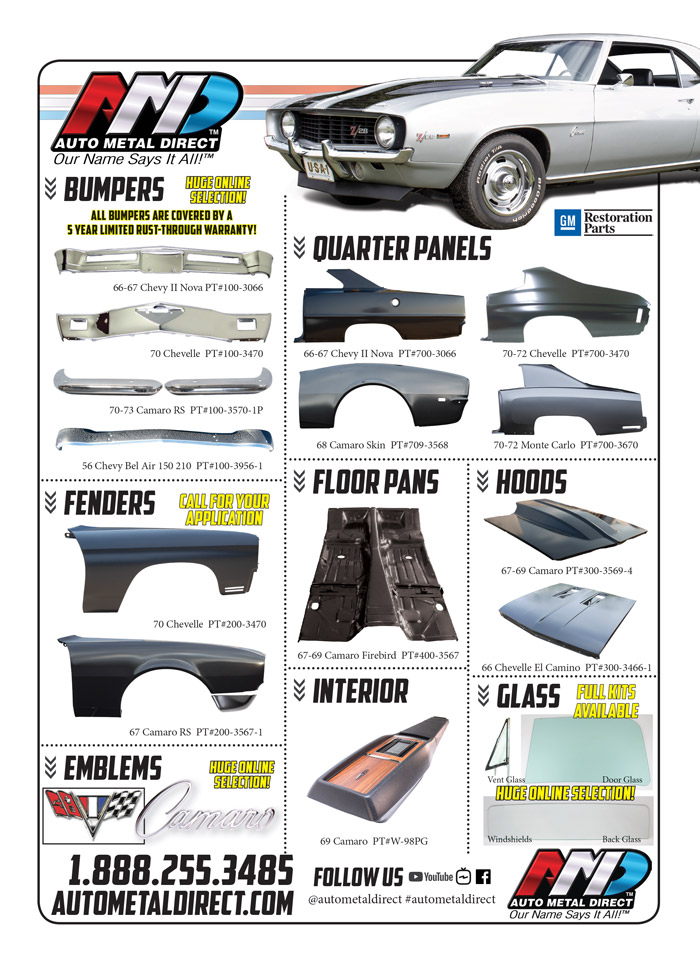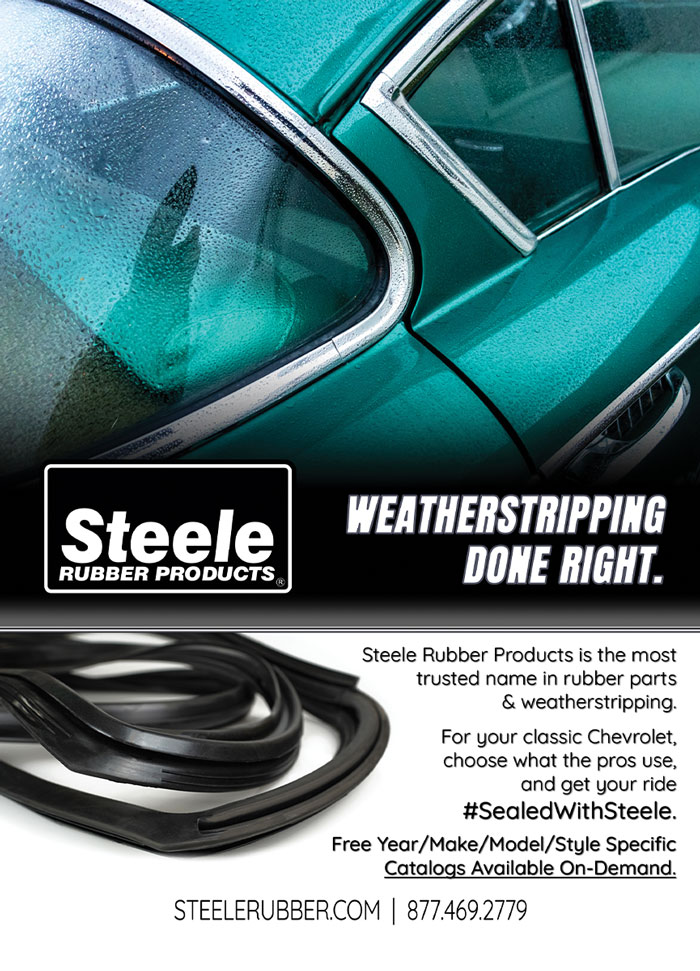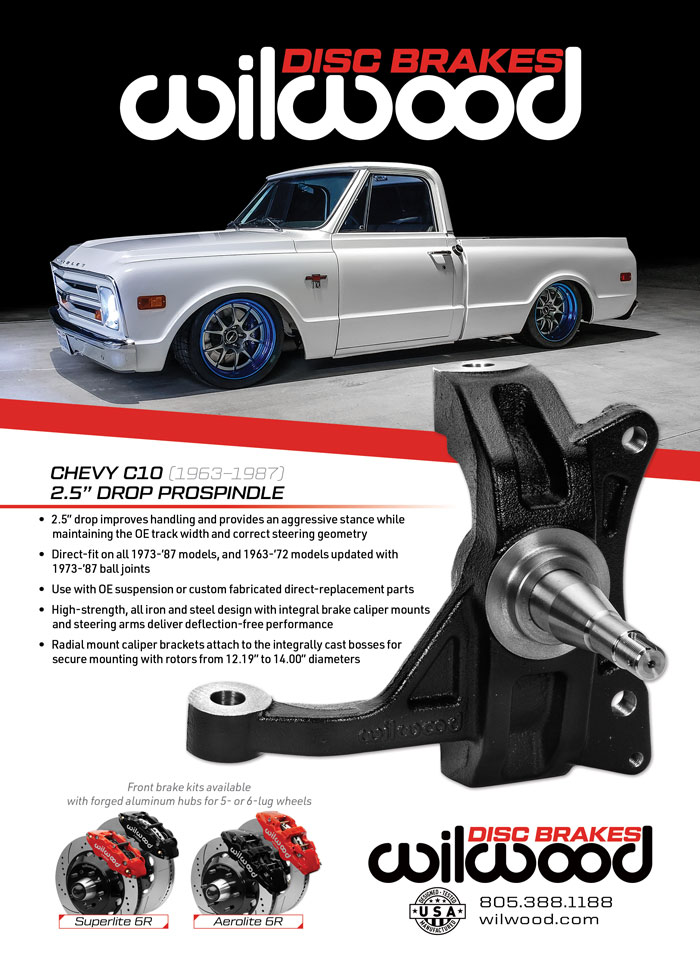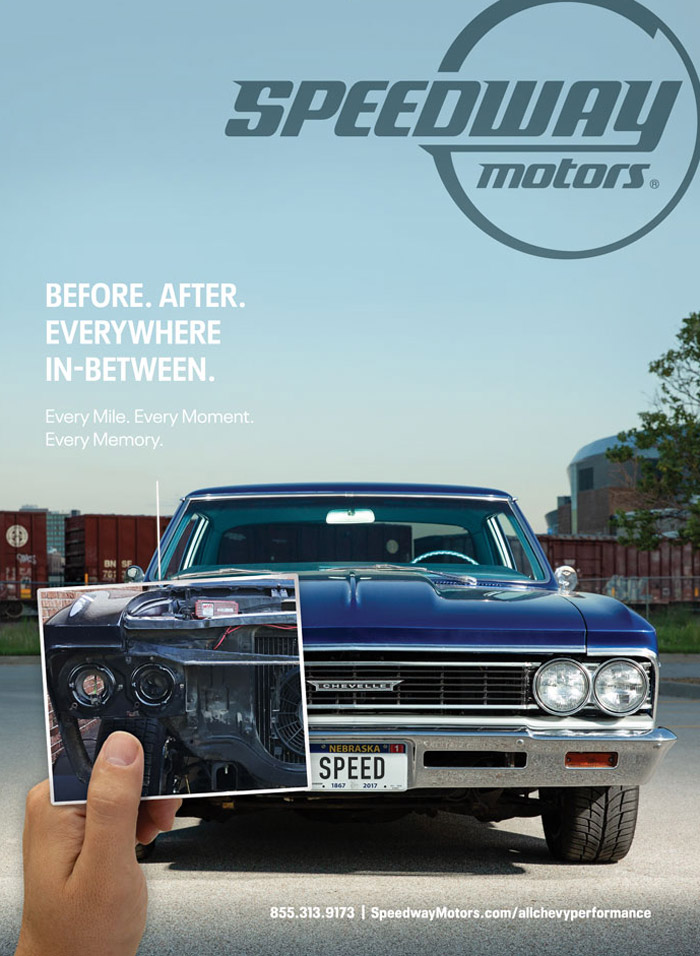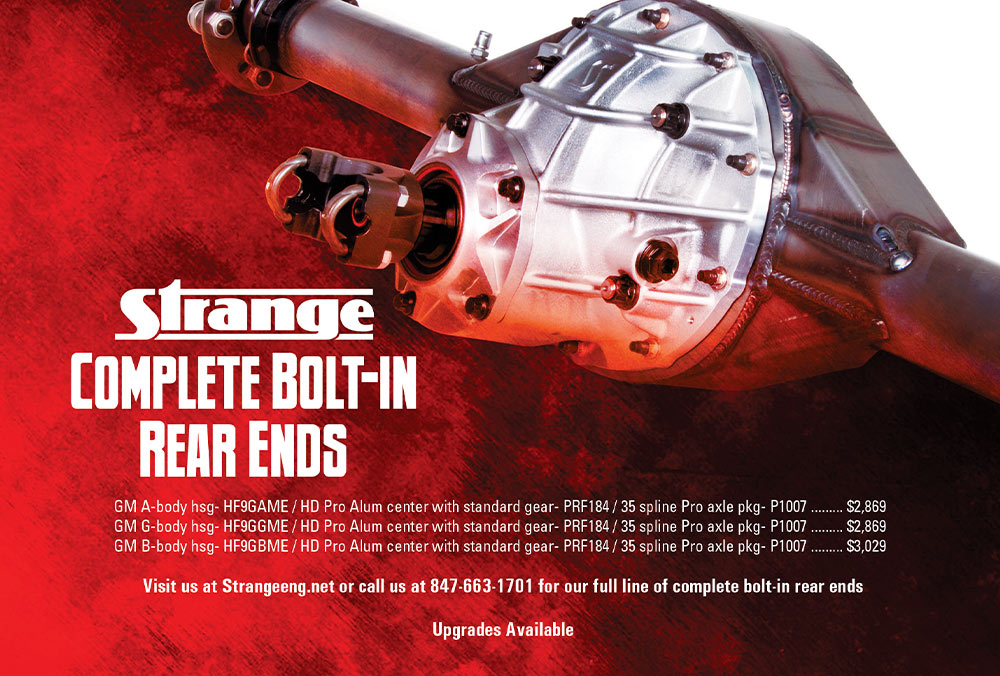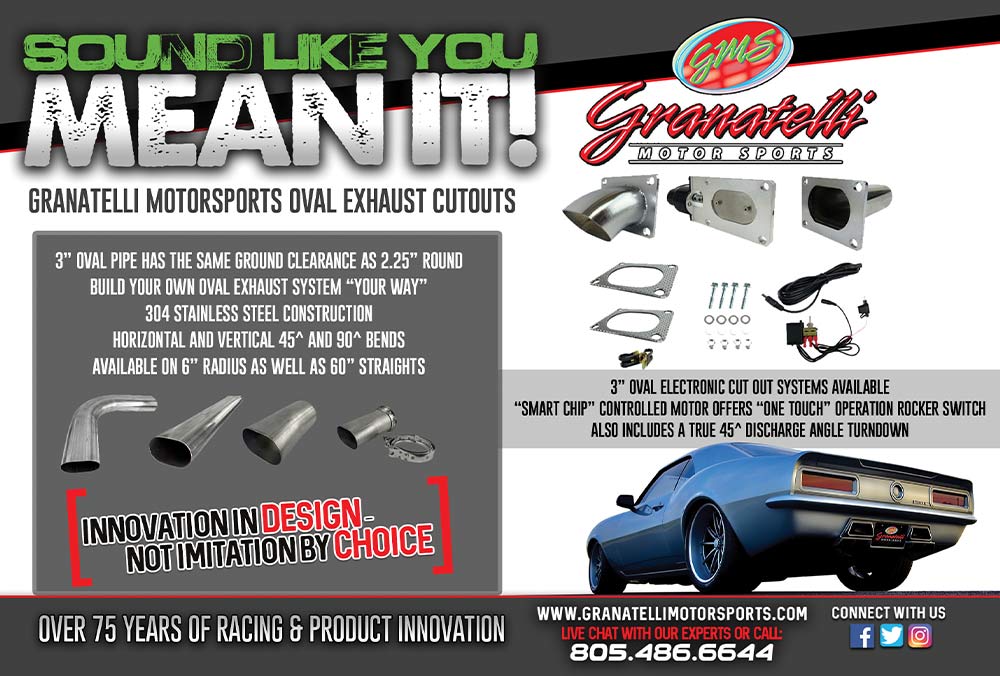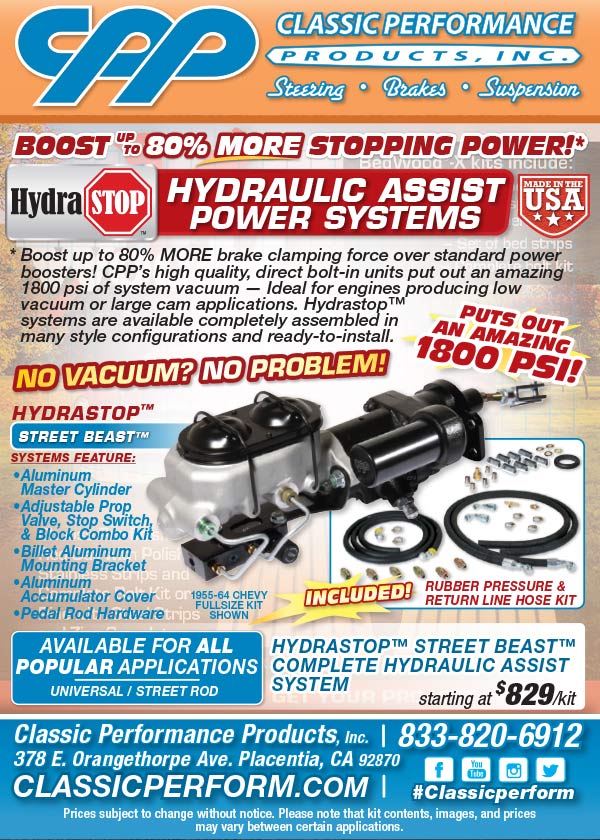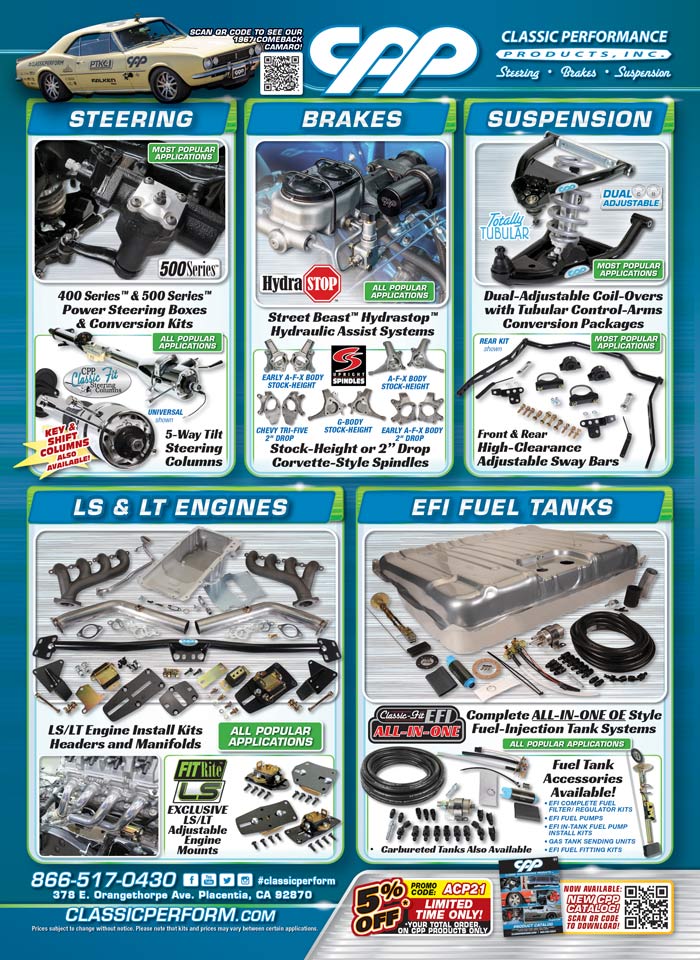 TOC
TOC
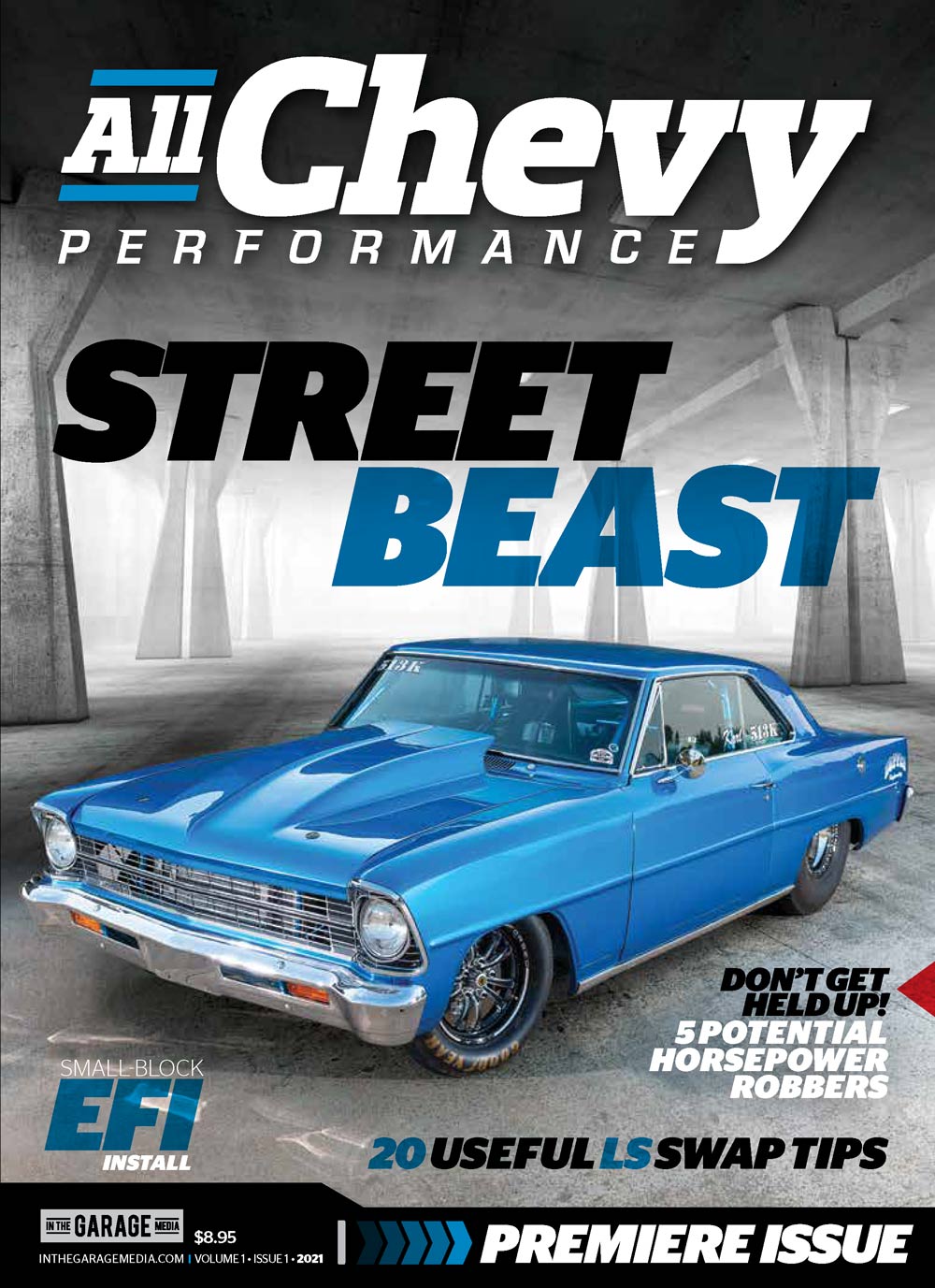


ROB MUNOZ
Sarah Gonzales – Copy Editor
Rodney Bauman, Tommy Lee Byrd, Ron Ceridono, Michael Christensen, Ron Covell, Gant Cox, Dominic Damato, John Drummond, Eric Geisert, Joe Greeves, John Jackson, Barry Kluczyk, Scotty Lachenauer, Ryan Manson, Josh Mishler, Todd Ryden, Chris Shelton, Tim Sutton, Chuck Vranas – Writers and Photographers
Mark Dewey – National Sales Manager
Janeen Kirby – Sales Representative
Patrick Walsh – Sales Representative
Travis Weeks – Sales Representative
AllChevyPerformance.com
ClassicTruckPerformance.com
ModernRodding.com
InTheGarageMedia.com
subscriptions@inthegaragemedia.com
ads@inthegaragemedia.com
info@inthegaragemedia.com

The All Chevy Performance trademark is a registered trademark of In The Garage Media.
1350 E. Chapman Ave. #6650, Fullerton, CA 92834-6550.



 FIRING UP
FIRING UP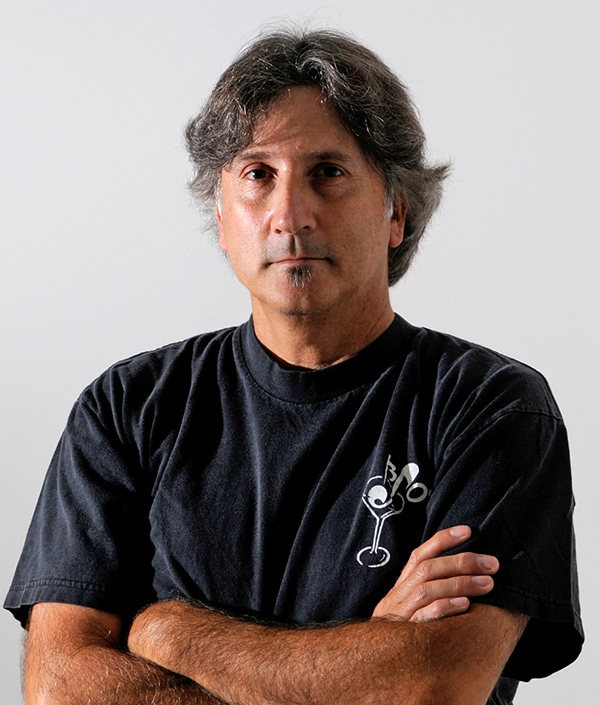
The Wheel
 BY NICK LICATA
BY NICK LICATAt’s days like these that make you wonder what life’s gonna throw your way next, and 2020 was solid proof. This past year I’ve been hit by more surprises than any other time in my life—no doubt most of you are going through similar issues. COVID-19? Didn’t have that one on my Bingo card. Nor did I have jumping back into the seat as a magazine editor—this time taking on this here brand-new Chevy-based magazine—totally unexpected but absolutely welcomed.
If you’ve been around the Chevy muscle car hobby and are past readers of Camaro Performers or Chevy High Performance magazines, you’ll most likely recognize my name as being associated with those titles. If you are new to the Chevy magazine world, here’s a quick backstory and some insight on how I got here.
I started out with a company called Primedia about 20 or so years ago working as an online editor for a few of their magazine websites. A couple years of that, and more than a few company name changes, led me to an editorial position at Camaro Performers magazine. From there I took over the editor’s seat at Chevy High Performance magazine.
 Parts Bin
Parts Bin BY Nick Licata
BY Nick Licata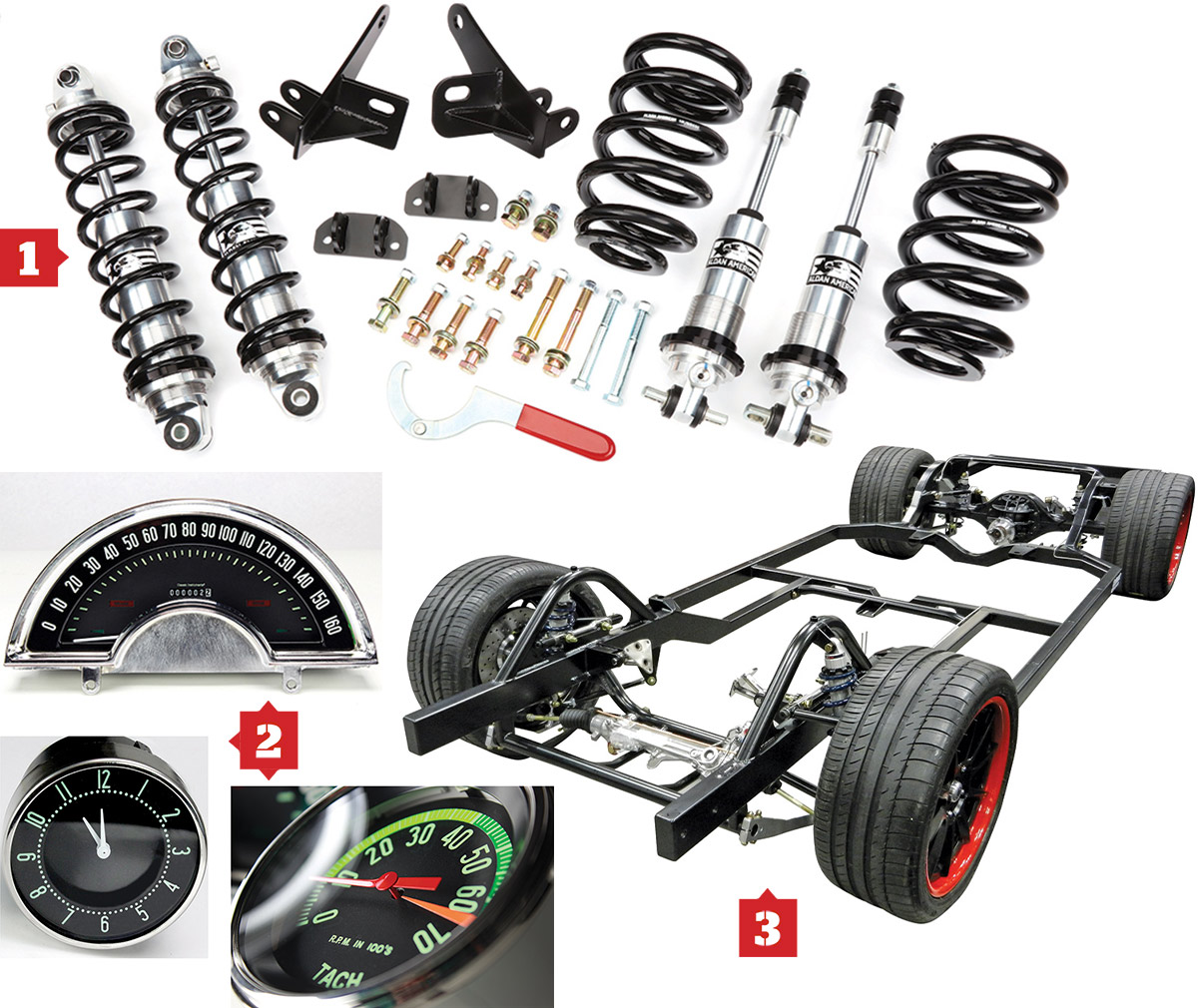
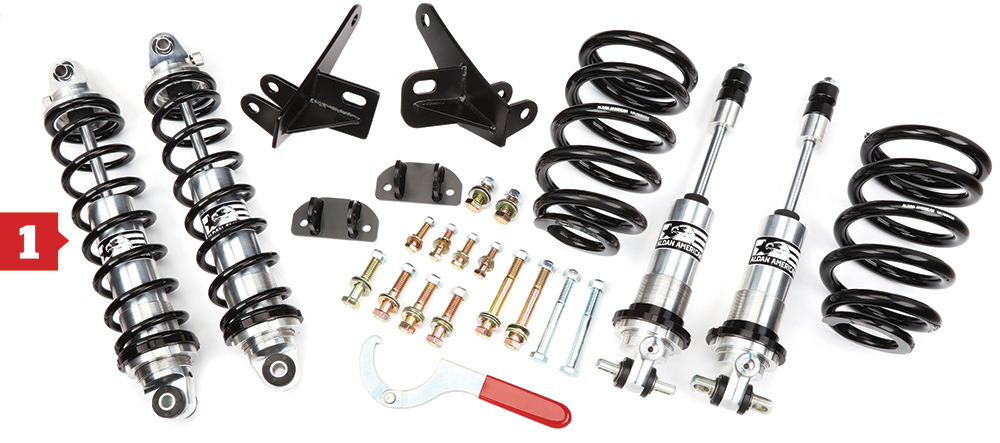
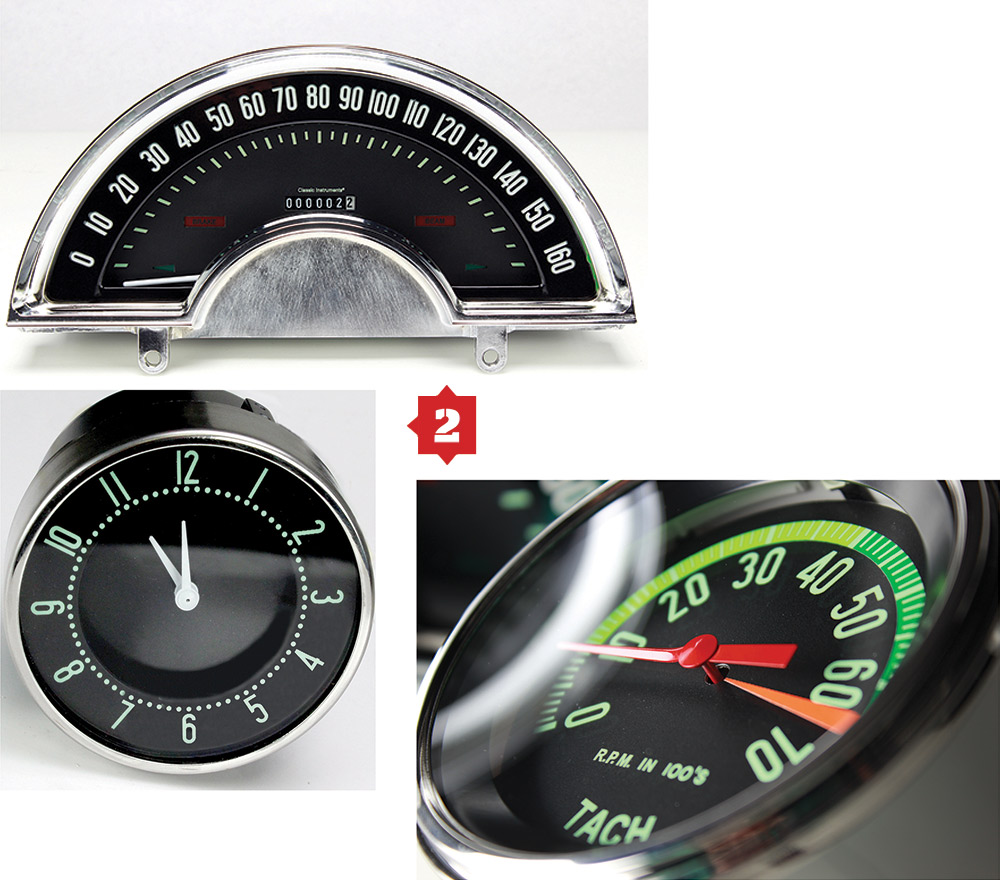
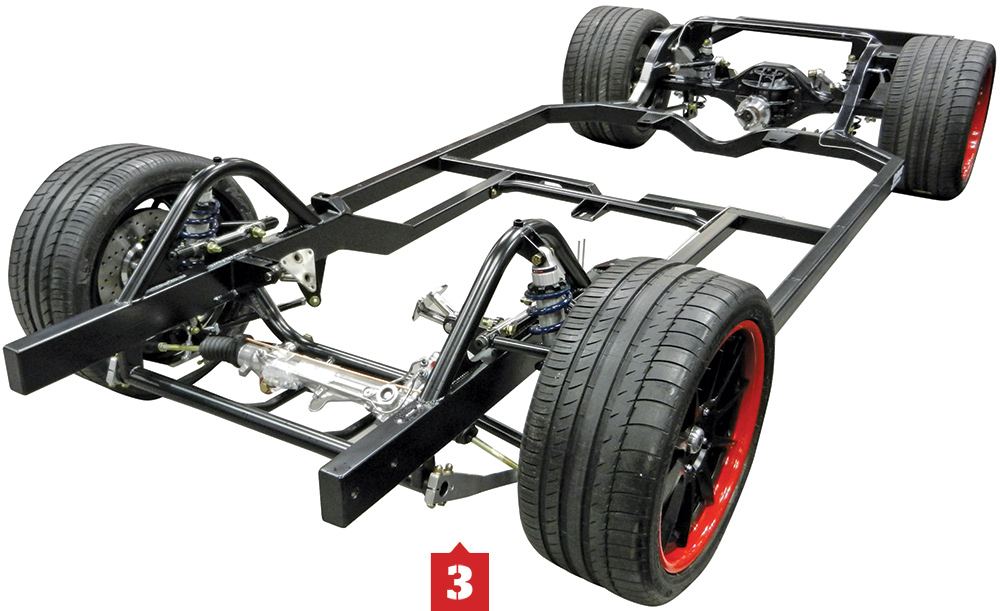
Aldan American
(310) 834-7478
www.aldanamerican.com
Classic Instruments
(844) 342-8437
www.classicinstruments.com
Schwartz Performance
(815) 206-2230
www.schwartzperformance.com
 Feature
Feature
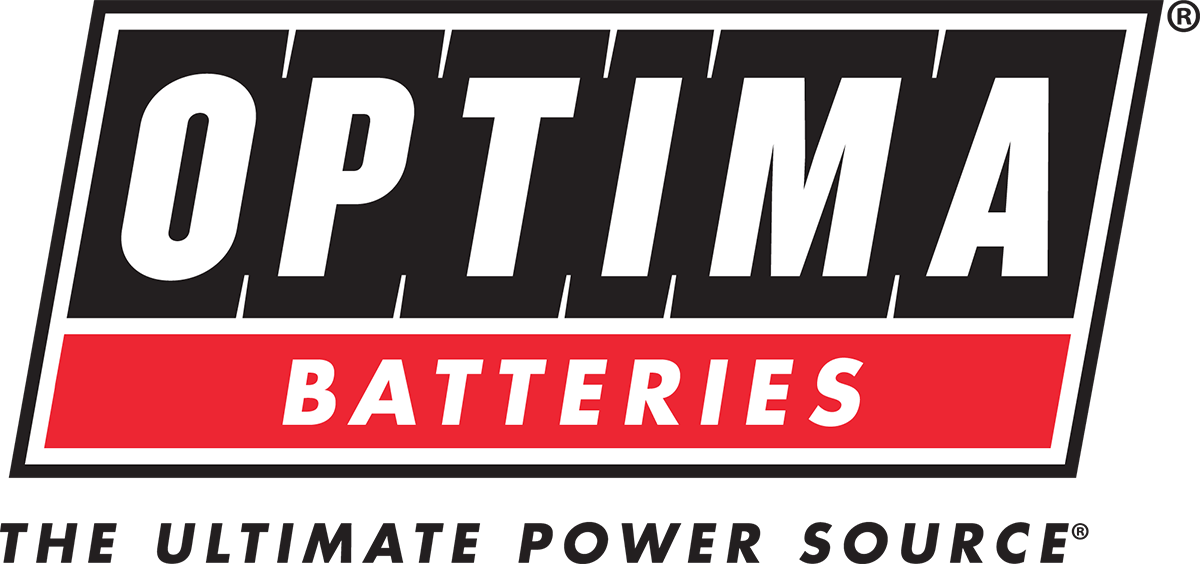
TEXT BY Nick Licata PHOTOS BY Grant Cox
PHOTOS BY Grant Cox
t was in 1967 when the Beatles released one of rock’s highest acclaimed albums “Sgt. Pepper’s Lonely Hearts Club Band,” Ralph Nader’s book Unsafe at Any Speed set in motion the U.S. government to implement mandated safety standards for new automobiles, and Karl Jones’ fresh little Nova came off the assembly line. Back then, the Chevy II Nova was considered a budget-priced compact car. While the “big dog” SS Nova came with plenty of visual attitude backed up by a 275hp 327ci engine, it was considered a street beast for the time.
No telling if Karl’s Nova began life with a 194ci, 250ci inline-six, or the 283ci V-8, but today it sports a supercharged LSA underhood cranking out over 700 hp. Nader would have totally lost it if he had any idea that kind of power would, or even could, reside between the ’rails of this little econobox.
So, how did Karl, a machinist from Belle Plaine, Kansas, come about this car? “I spotted it at racetracks in my area and had admired it for a long time. I always thought it looked clean and had a great stance,” Karl remembers. “A friend of mine bought it from his grandpa, which then took me 15 years to convince him to sell it to me.”
 TECH
TECHINTAKE
n our modern times, upgrading a classic car with electronic fuel injection has become standard in the hot rodding world. There are a number of different throttle body EFI systems available designed to bolt in place of your carburetor, and while these systems are certainly worthwhile investments that do deliver driveability benefits, your engine still looks like an old carbureted engine.
FiTech Fuel Injection is one company that has made it easy and affordable to make the EFI swap and offers quite a few different throttle body systems. One newer system that caught our attention is their Ultra Ram EFI, which is a complete port fuel injection system with a slick sheetmetal intake system as a foundation.
The Ultra Ram places the throttle body vertically at the front of the engine, similar to modern muscle EFI systems. Rather than four injectors placed in the middle of the intake plenum, the port fuel design has an injector for each cylinder (a 39-pound injector in this case). With individual runners for each cylinder, throttle response is destined to be snappy with smooth acceleration.
 Feature
Feature TEXT AND PHOTOS BY Jason Lubken
TEXT AND PHOTOS BY Jason Lubken
et’s jump back to the ’80s for a second. Some might remember the hairspray crisis, or TV shows like Knight Rider, but everyone should remember their first third-gen Camaro experience. For a while, third-gens seemed to be synonymous with throwback Halloween costumes (think Joe Dirt), but times are changing; F-bodies have solid bones. They are quick, fun to drive, and with the right upgrades, they can cut cones like a Corvette.
 TEXT AND PHOTOS BY Jason Lubken
TEXT AND PHOTOS BY Jason Lubken
et’s jump back to the ’80s for a second. Some might remember the hairspray crisis, or TV shows like Knight Rider, but everyone should remember their first third-gen Camaro experience. For a while, third-gens seemed to be synonymous with throwback Halloween costumes (think Joe Dirt), but times are changing; F-bodies have solid bones. They are quick, fun to drive, and with the right upgrades, they can cut cones like a Corvette.
 Tech
Tech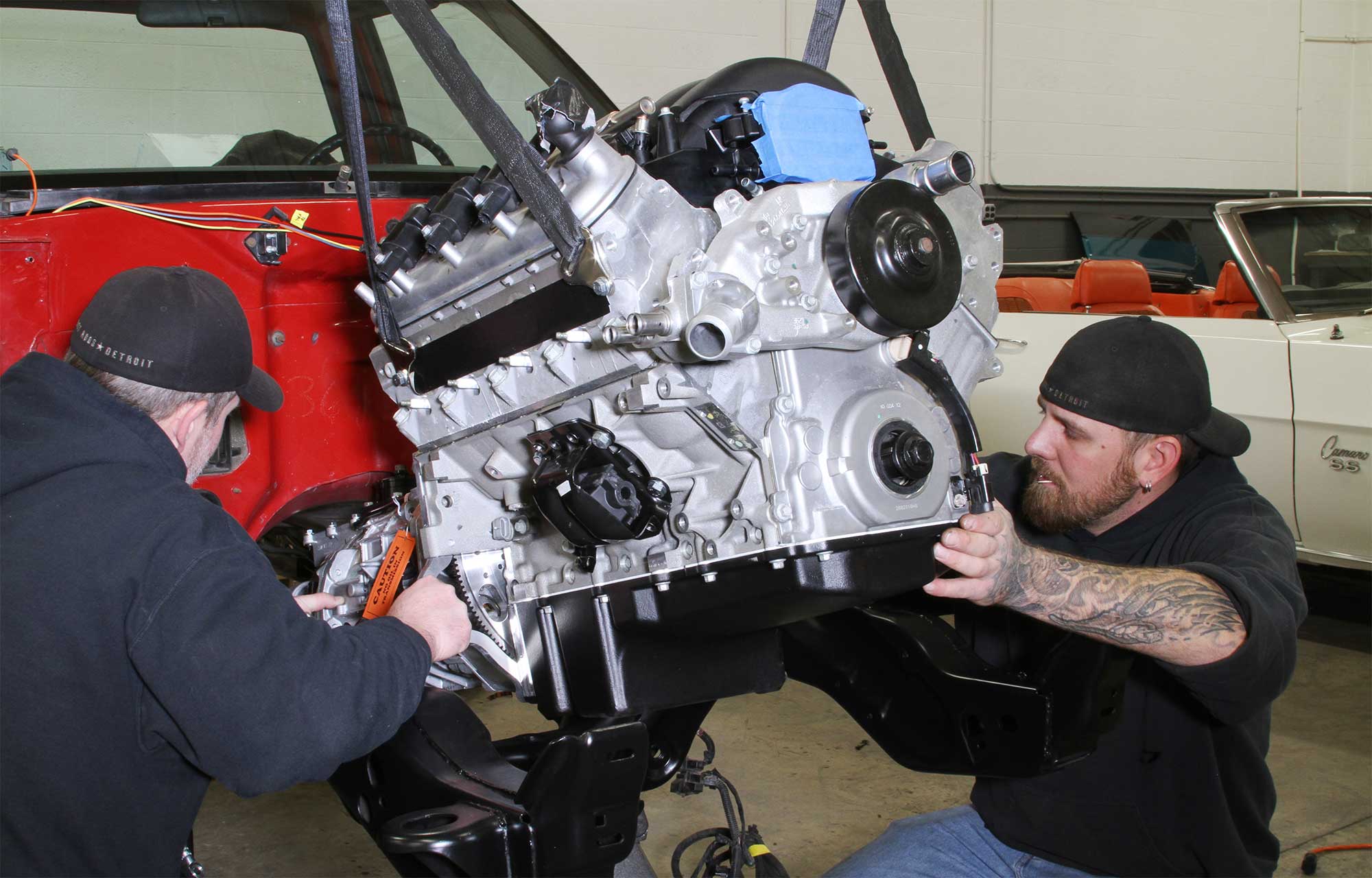
swaps are so common these days that it’s easy to get complacent about the project if you’ve never attempted it. After all, swap kits are plentiful, with most tailored to popular A-, F-, and G-bodies, as well as vintage Chevy trucks.
“With all the swap parts available today, dropping in the LS engine and getting it running is the easy part,” Matt Gurjack, the man behind the welder at Detroit-area hot rod and Pro Touring fab shop Sled Alley, says. “It’s everything else to support it that can bog you down, cause headaches, and ratchet up the cost.”
He says that for popular vehicles, such as first-gen Camaros, the muscle car–era Chevelles, and some of the trucks, the aftermarket swap kits and correlating parts enable the do-it-yourselfer to install an LS engine and transmission without the need for a welder and little or no cutting. But there’s more to an LS swap than engine mounts and an oil pan. Regardless of whether you’re using a junkyard 5.3L out of an old truck or one of Chevrolet Performance’s crate engine packages, there are a myriad of details that have to be executed in order to make it all work out correctly. That’s what we’re laying out here—the general steps and helpful tips to make your swap go smoothly.
 Feature
Feature
 Text and Photos by TOMMY LEE BYRD
Text and Photos by TOMMY LEE BYRDome folks were lucky enough to experience the muscle car era at the perfect time in their lives. Late teens or early twenties was the ideal age for many enthusiastic car guys to have the time of their lives behind the wheel of a fast car. Longtime car guy and resident of Loganville, Georgia, Justin Sears, barely missed the boat, being a few years too young, but his father helped start the fire with this 1965 Chevelle.
This very car hauled Justin to and from school, and just about everywhere during his childhood years. He spent a lot of time in the back seat as a kid and eventually moved his way up into the driver seat by the time he reached 16. Jerry, Justin’s father, made the ultimate step in sparking Justin’s interest in cars by helping him get it ready for high school. They straightened up the body and kept the stock 283 and Powerglide to keep Justin out of trouble. The Centerline wheels and raised white-letter tires definitely compensated for the lack of horsepower. Justin kept the car in this configuration for a few years, but eventually parked it in late 1993.
 Tech
Tech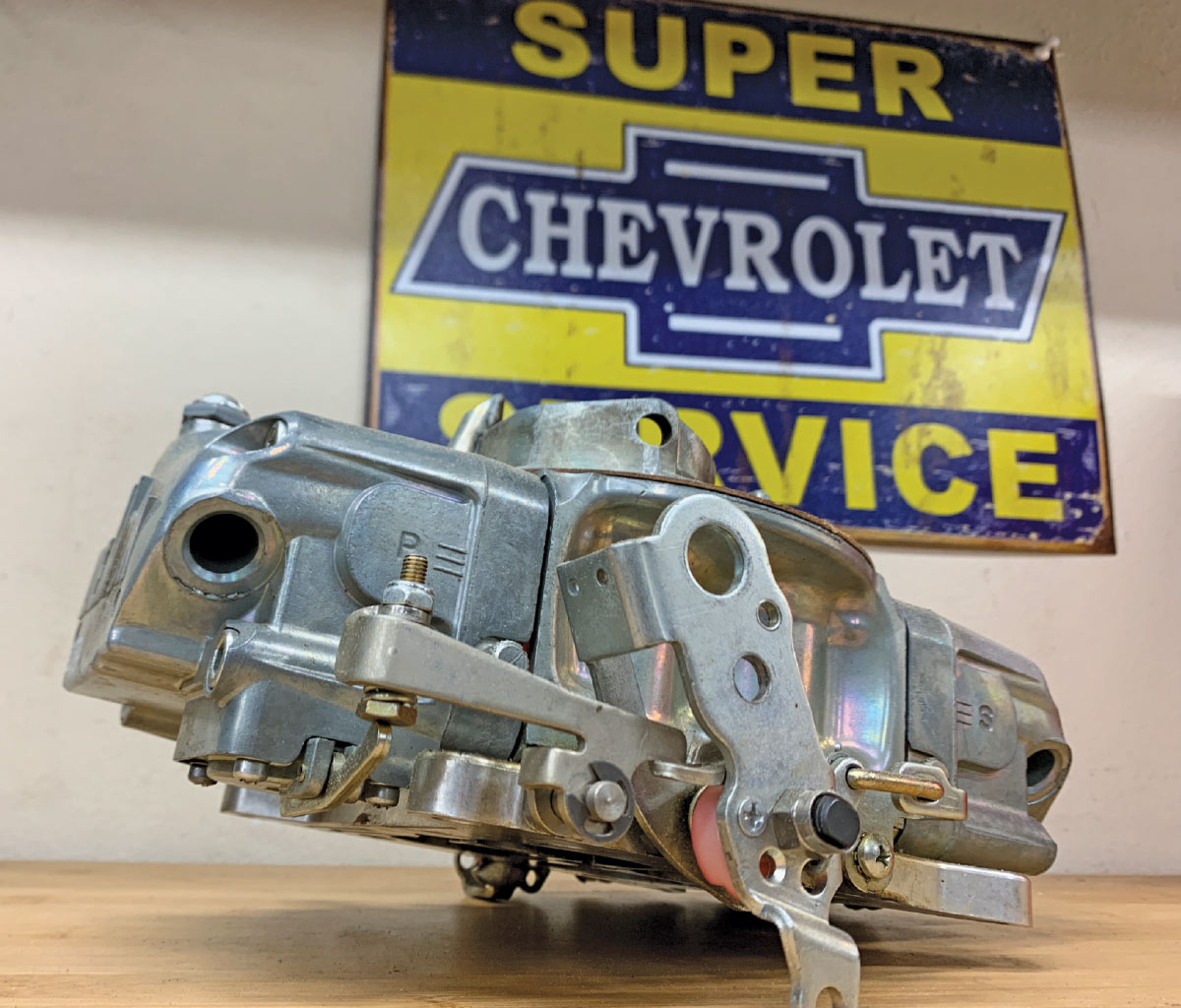
 TEXT AND PHOTOS BY Evan Perkins
TEXT AND PHOTOS BY Evan Perkins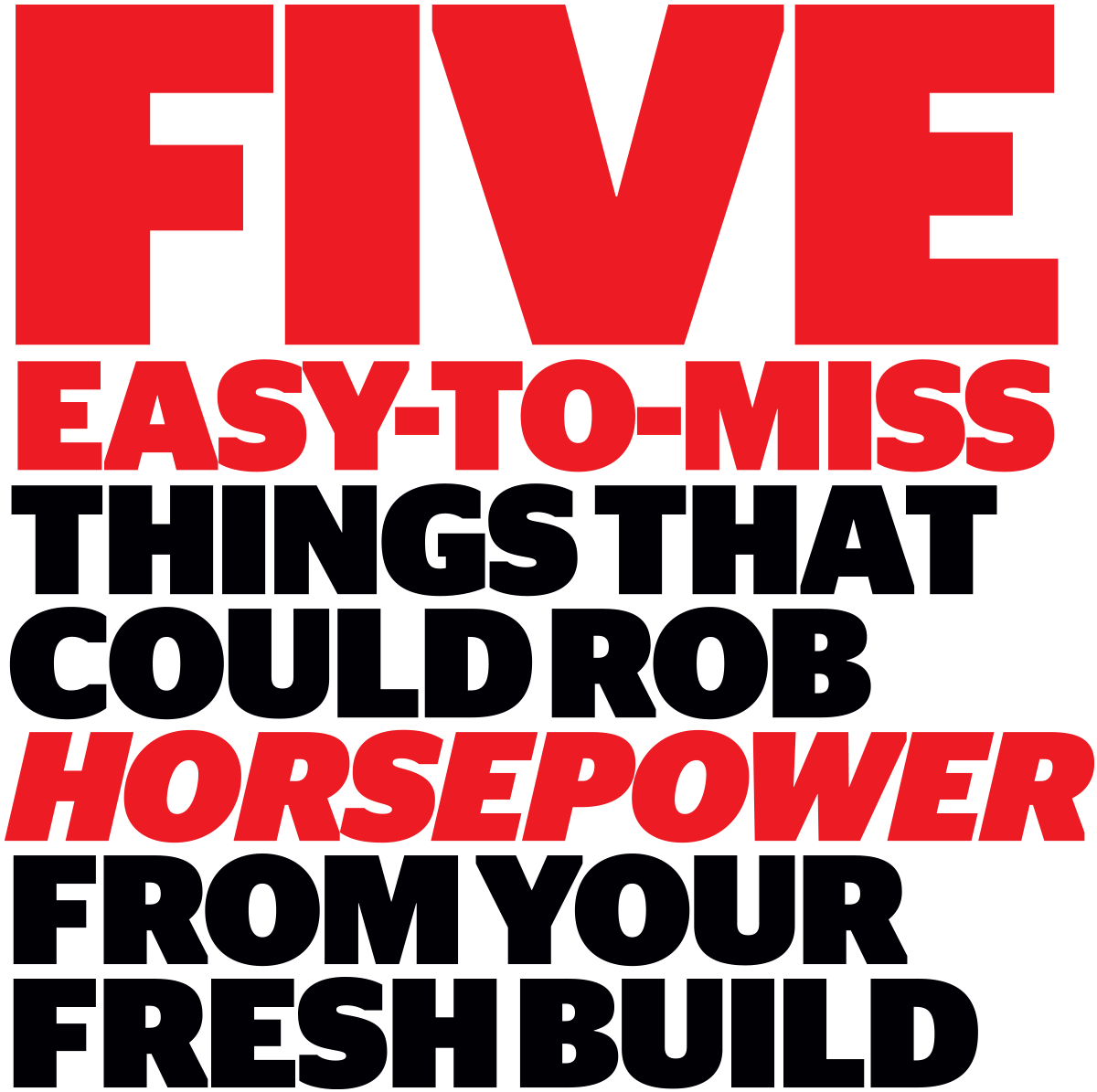
o, you just got your hot rod running? Whether it’s a late-model LS, a big-block brawler, or a small-block screamer, your work is far from done. Just as there are many ways to build a car right, there are even more ways to make a simple mistake that could leave power and torque on the table.
 TEXT AND PHOTOS BY Evan Perkins
TEXT AND PHOTOS BY Evan Perkins
o, you just got your hot rod running? Whether it’s a late-model LS, a big-block brawler, or a small-block screamer, your work is far from done. Just as there are many ways to build a car right, there are even more ways to make a simple mistake that could leave power and torque on the table.
 Feature
Feature
t was Freddy Rodriguez’s destiny to own this stunning 1968 Nova. The New York–based mechanic first spotted the car parked on the street in 1995 and left a card on it with his phone number explaining that he’d like to buy it. He got no response. Never one to give up, he kept leaving cards on it–for five years! Despite his tenacity, however, he never heard from the owner. Then one day, the car disappeared from its usual parking spot so Freddy thought for sure he’d never see it again. But he was wrong!
t was Freddy Rodriguez’s destiny to own this stunning 1968 Nova. The New York–based mechanic first spotted the car parked on the street in 1995 and left a card on it with his phone number explaining that he’d like to buy it. He got no response. Never one to give up, he kept leaving cards on it–for five years! Despite his tenacity, however, he never heard from the owner. Then one day, the car disappeared from its usual parking spot so Freddy thought for sure he’d never see it again. But he was wrong!
 Tech
Tech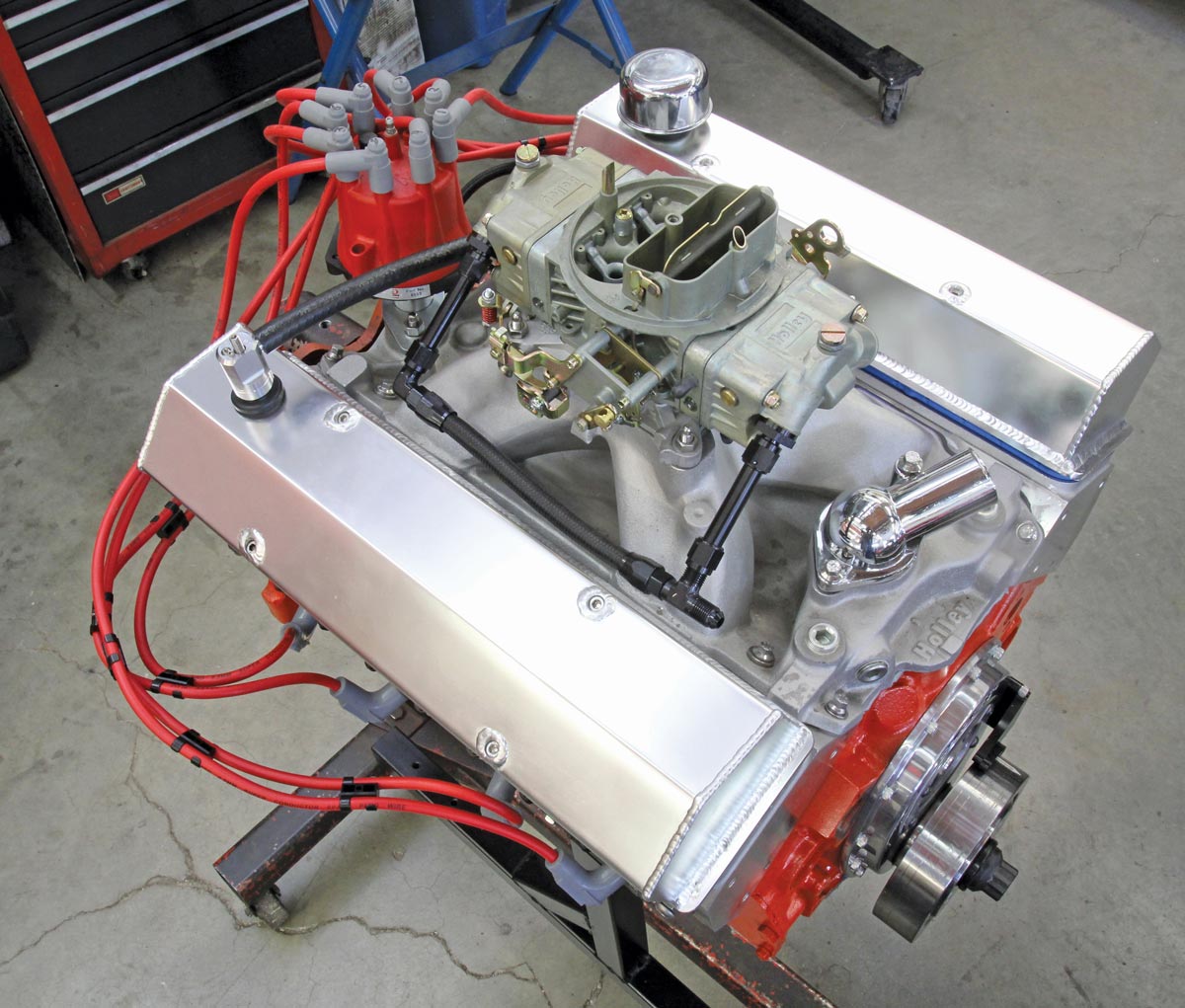
 TEXT AND PHOTOS BY JEFF SMITH
TEXT AND PHOTOS BY JEFF SMITHne of the most iconic Beatles songs is “Let it Be.” Our car guy version of that is “Let it Breathe.” No engine creates a perfect seal between the pistons, rings, and cylinder wall. Some amount of cylinder pressure always leaks past the rings and ends up pressurizing the crankcase. If the crankcase is not properly vented, this pressure will do odd things like push the dipstick out of the tube, force valve cover gaskets out, and generally cause all kinds of oil leak–inducing grief.
This is why engine manufacturers always include a vent system. In the days preceding the positive crankcase ventilation (PCV), OE engine builders merely vented the engine with a road draft tube that dumped oil on the road and underneath the car. The PCV system began in the very early ’60s, which pulled a measured volume of crankcase vapors through the valve to the carburetor to be combusted. This is still in use today.
Modern car builders prefer to create a desired image in the engine compartment, and that often requires a custom valve cover. To give the builder the freedom, these covers are regularly offered without PCV or breather holes. It becomes the job for the car builder to place these breather/PCV valve holes in the desired location.
 Feature
Feature

hen you think about fullsize cars you generally don’t think about big-time performance, even though some of the cars came from the factory with potent big-blocks. The 2-ton sedans just don’t strike a chord with “go-fast” enthusiasts, but this 1968 Bel Air is a whole different animal. It’s not your average fullsize Chevrolet, as it boasts 725 hp, thanks to a wicked SB2 engine plucked from a retired NASCAR Cup Series race car. Teddy McClure is the proud owner, and he hails from Chilhowie, Virginia. Teddy and his brothers were heavily involved with NASCAR racing during the ’80s and ’90s, with drivers such as Mark Martin and Ernie Irvan driving for their team. He has since retired from Morgan-McClure Motorsports Inc., but it’s easy to see where he got the inspiration for this SB2-powered Bel Air.
 Tech
Techhen it comes to a classic Chevy that gets driven on a regular basis, it doesn’t make sense to go all-out on engine bay detailing. You can, however, make a huge difference with a few parts and some serious cleaning. Our 1964 Chevelle has a tired 283ci small-block underhood, and it isn’t exactly “oil tight.” It leaks a drop or two on the garage floor, but the main annoyance is the oil film that you have to wipe off every few thousand miles. Regardless of the fact that this engine is a little loose in the gasket department, we wanted to freshen up its appearance so that we wouldn’t be too embarrassed to open the hood at our local cruise night.
The general idea is to do this type of engine bay detailing while you’re working on other projects. For us, we had part of the engine disassembled for cooling upgrades and an EFI install, so it was the perfect time to make it clean. We used basic tools and materials—simple stuff that you can get at the local parts store. We used semigloss black spray paint for accessory brackets, Chevrolet Orange engine paint for the block and heads, satin black for the inner fenders and firewall, and we rubbed some Calyx manifold dressing to bring the rusty exhaust manifolds back to life. Eastwood and Speedway Motors also sell manifold coatings and other types of high-temp paint that work well for this application.
Let’s be clear: This isn’t a show car, so we didn’t do a show-car-quality engine bay. However, our rattle-can restoration and the addition of some nice, new components from Holley, Vintage Air, and U.S. Radiator really helped this engine bay look great. Even though the old engine isn’t perfect, we’re happy with the end result of our engine bay makeover.
 Bowtie Boneyard
Bowtie Boneyard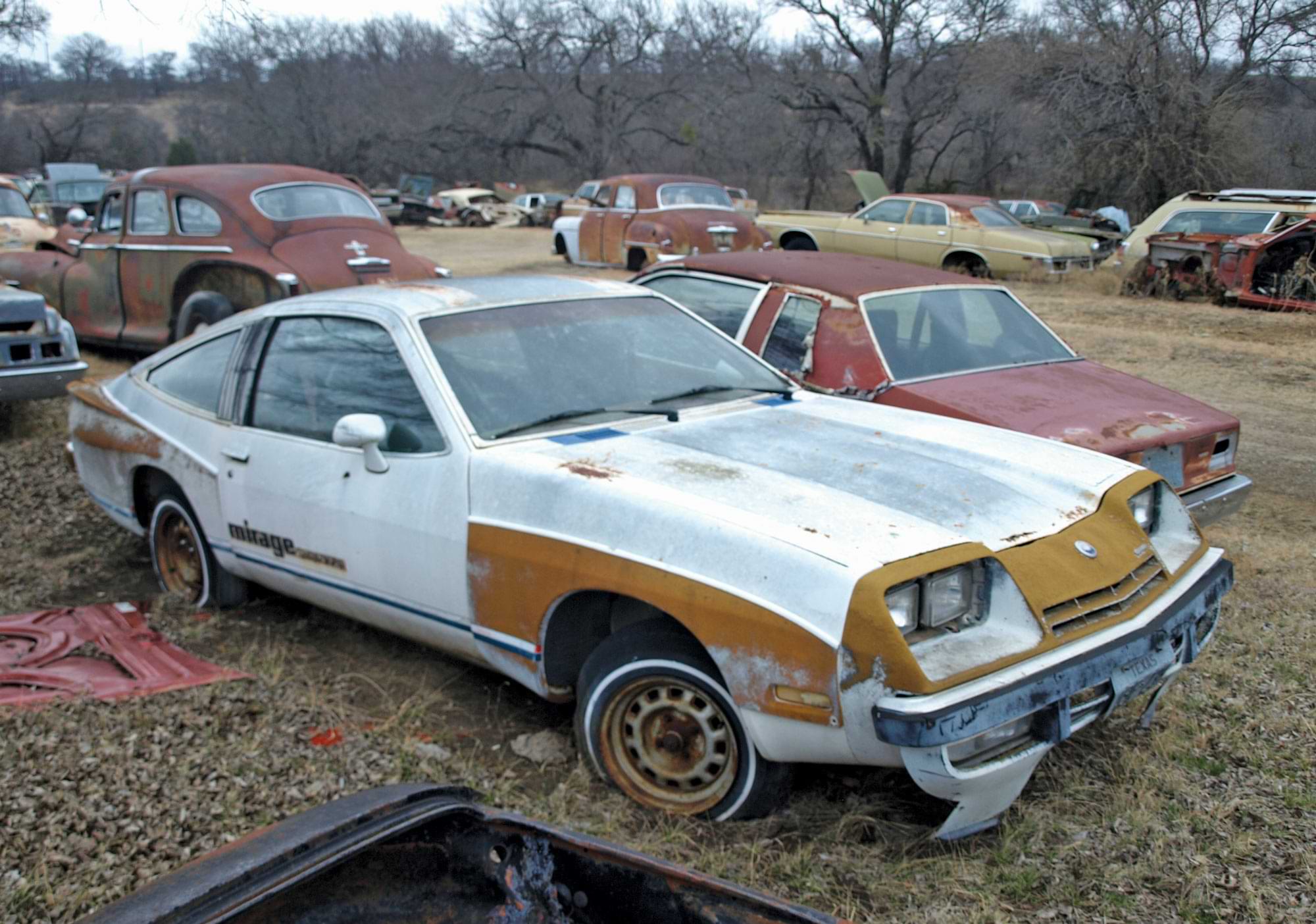
 TEXT AND PHOTOS BY Steve Magnante
TEXT AND PHOTOS BY Steve Magnanten this world of mid-engine Corvettes that run 0-to-60 in 3 seconds in base trim, 198-mph ZL1 Camaros and Duramax Silverados with the torque of two LS6 Chevelles, the pair of vintage Bowties displayed here certainly won’t raise many eyebrows—but when they were new, they were the talk of the town. And now after nearly five decades of “ripening” on the vine, we dare say they’re worthy of a second look.
In the case of the 1977 Monza Mirage, while harsh critics may say the Monza’s only worthwhile contribution was its 7.50/7.62 rear axle (later used in millions of Gen III Camaros and S-10 pickup trucks), its Mirage graphics and bodywork set it apart as something special: A factory-authorized, street-legal tribute to the tube-framed, V-8–powered machines dominating the IMSA/Camel GT road race series of the day.
Advertiser
- American Autowire33
- Art Morrison Enterprises13
- Auto Metal Direct65
- Automotive Racing Products21
- Classic Instruments9
- Classic Performance Products85, 89, 92, 5, 4
- Dakota Digital91
- Danchuk USA11
- Eddie Motorsports57
- FiTech EFI35
- Flaming River Industries55
- Gandrud Chevrolet89
- Golden Star Classic Auto Parts7
- In The Garage Media87
- Lokar2
- Performance Online63
- Roadster Shop43
- Rod Shows81
- Scott’s Hotrods83
- Speedway Motors77
- Steele Rubber Products69
- Strange Engineering83
- Vintage Air6
- Wilwood Engineering75
- Year One89


